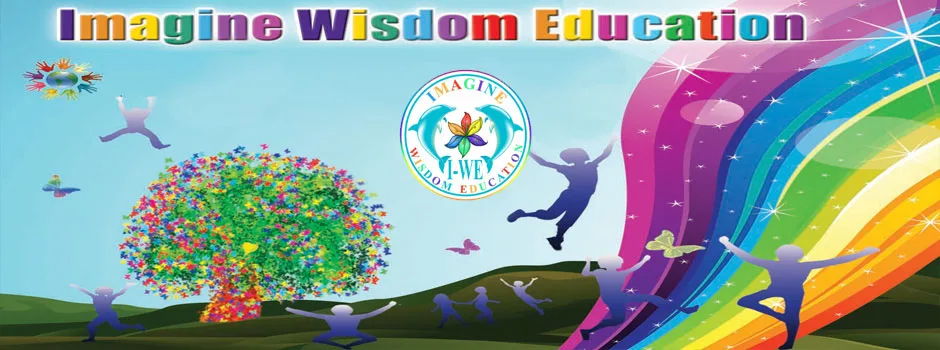
Imagine Wisdom Education
The Imagine Wisdom Education (I-WE) system is the result of mutual creation of children, their teachers, and parents. To create this page, One Community spent hours interviewing Satyanna Luken, Author, Montessori Teacher, and founder of I-WE. For more detailed information on I-WE, we recommend you read Satyanna’s comprehensive book about her method: “I-WE, Imagine Wisdom Education.”
RELATED PAGES
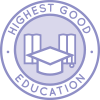
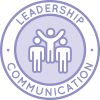
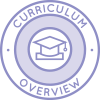
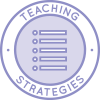
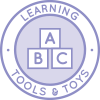
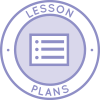
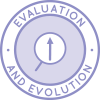
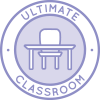


OTHER WAYS TO CONTRIBUTE TO EVOLVING THIS EDUCATION PROGRAM WITH US
SUGGESTIONS | CONSULTING | MEMBERSHIP | OTHER OPTIONS
IMAGINE WISDOM EDUCATION
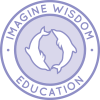 I-WE methodology is a combination of Montessori, Waldorf, and Reggio ideas synthesized through a collaborative creative process of children, their teachers, and parents. For that reason, the schedule, types of activities, and classroom design are very flexible and depend on common effort and cooperation.
I-WE methodology is a combination of Montessori, Waldorf, and Reggio ideas synthesized through a collaborative creative process of children, their teachers, and parents. For that reason, the schedule, types of activities, and classroom design are very flexible and depend on common effort and cooperation.
IMAGINE WISDOM EDUCATION SCHOOL DESIGN
The school construction is based on three principles:
- Inside the school should feel like home. It is designed to be cozy, warm, safe, inviting, and soft
- Inside, just like outside, you feel the connection with nature, all living creatures, Mother Earth and Father Sky
- The whole space is filled with and embodies the atmosphere of co-creation
The classroom is an inner and outer space that function as a whole. The inside of the building is divided into 7 sections/rooms, each of them represented by a certain color ” from red to violet, like the colors of the chakras or 7 colors of the rainbow:
 | The red room stands for Love and being grounded and connected. The main tools are a set of 20 drums. The function of this room is arts in all their possible realizations. |
| The orange room represents imagination and full self-expression. It encompasses creativity and everything connected with it. The tools of this room are easels, paintbrushes, watercolors, oils, etc. | 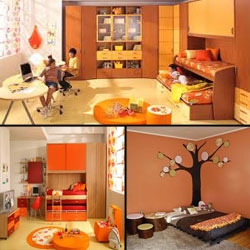 |
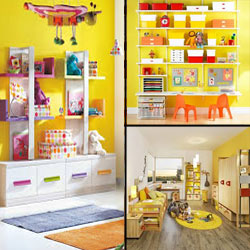 | The yellow room is about peaceful leadership teaching. Here students learn how to be leaders in peace, health, and happiness, and also train their willpower. There’s a ministage, a microphone, a podium, a big screen there to practice public speaking and share ideas. |
| The green room is about sustainable life and everything connected with it. Here students learn about sustainable living, solar power, using rainwater, being friendly with the world, never harm any being (never step on a bug, a spider), etc. The main tools are gardening equipment and kitchenware with growing food and cooking facilitated by access through this room to an outside area with a big garden. |  |
 | The blue room stands for communication, empathy, feelings and the ability to express yourself. It contains all necessary tools for watching and making movies, using media such as a screen, a projector, and computers. |
| The Indigo room represents indigenous cultures and evolutionary consciousness. It’s a “world room” where students can learn about past and present, ancient and modern, and get connected to their roots, learn about indigenous cultures, ancient and modern philosophers and thinkers. This room is for practicing yoga, meditation, dancing, storytelling, etc. Here students learn geography, history, philosophy and so on. The tools of the indigo room are books and internet materials on the above mentioned subjects. |  |
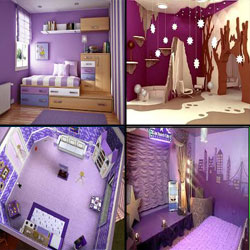 | The violet section (room) is a big stage with rows of seats set up for dancing and theatre performances, concerts, shows, and speeches. It represents the crown chakra, the Being; here different religions and philosophies are explored. |
IMAGINE WISDOM EDUCATION DAILY SCHEDULE OUTLINE
The schedule is formed through the perspective of immediate needs of every child and has a flexible structure. It focuses on a three-day working week so that the rest of the time children spend with their parents who take them to the world (museums, farms, etc.). Its tentative schedule looks like:
- 9 ” 9:30 AM: children gather in a circle, they greet each other, sing songs, dance, etc.
- 9:30 ” 9:50/10:00/10:15 AM: it’s work time ” children imitate their parents doing different “work” (Montessori activities). The emphasis is on taking one “work” at a time. When a child is done with one work, he/she can take another one, which develops discipline. After work there’s usually relaxation of some sort: dancing, shaking, or puppet theater.
- 10:15 ” 11:00/11:15 AM: snack or play time that includes whatever children want as long as they are kind and safe. After play time children clean up before closing circle and/or story time
- 12:30 till 15:30 nap (the duration is different for different children)
After napping, morning activities are repeated in a comfortable succession: snack, work time (can be arts, learning a new game), and play. In the afternoon, meditation and Kundalini yoga also take place.
IMAGINE WISDOM EDUCATION SCHOOL METHODOLOGY DETAILS
I-WE methodology is a combination of Montessori, Waldorf, and Reggio ideas. The foundation is Montessori school which introduces such principles as prepared environment, prepared teachers (they walk their talk), and freedom. The environment is organized in the way that children can imitate their parents by “doing work.” They are involved in cleaning the space and making it beautiful. Since the activities are chosen in the way that children can win at them (they are challenging, yet possible to be carried out), they learn to do everything by themselves (typical talk starting from age 1 ” 1.5: “I can do it!”). Within the created environment teachers let children choose the activity they want. They guide gently and bring the world to the child to show how it works through a variety of activities.
To make the Montessori approach even more balanced, the world of beauty, fantasy, and creativity is borrowed from Waldorf and Reggio schools. Here a number of group activities are practiced, such as cooking together, dressing up and setting up for a theater performance, puppet show, etc., and learning two-three languages in a natural environment. Combining these things helps form more brain cell connections that improve both intelligence and creativity.
A great emphasis in the I-WE methodology is also put on non-violent communication:
- Attentive listening of one another
- Asking about feelings of each other
- Practicing expressing feelings
- Mirroring each other
- Being kind and loving with each other
If a conflict happens, everybody stops; at first the conflict is dealt with, then the activity resumes. In the group, sharing is encouraged and appreciated. Older kids are praised for sharing with younger ones. If the same toy is wanted by two kids at the same time, one kid counts to 10 while the other one is holding the desired object, then they change roles.
IMAGINE WISDOM EDUCATION SCHOOL LEARNING ACTIVITY DETAILS
This combination of different approaches combined to create the I-WE method gives rise to an abundance of activities. They can be individual (quiet reading), pair, and group activities. Here’s a list of suggestions:
- Digging in the dirt (in the sandbox, mud, ground)
- Playing at a water-play table (bucket table/mini-pool/water station)
- Playing in a building corner, with wooden blocks
- Trains, trucks with tunnels
- Station for cars, city life, fire station
- Dollhouse with dolls-babies, cribs
- Climbing in the gymnastic area
- Playing ball games (tennis) in the sports area
- Playing with swing sets, hanging bars, seesaws
- Dressing-up for acting out fairies, dragons, elves in the magic area
- Preparing snacks for each other in the kitchen area
- Creating art
- Playing musical instruments
- Kundalini yoga practice: pressing thumbs against the rest of the fingers starting from pinkies till index fingers voicing one syllable for each pressing gesture: sa-ta-na-ma. It is practiced at first aloud, then quiet, then without any sound
- Walking on a line
- Balancing
- Reading books
- Sorting and pouring things (rice, water)
- Putting buttons into holes
- Dealing with zippers, snaps
- Washing classrooms, scrubbing tables
- Polishing things with a little wax
- Silence games (teaches dignity)
- Different kinds of puzzles (e.g. in the set of cards of the same type a child is supposed to color the part of the picture corresponding to the word under the picture)
- Activities in the labyrinth (e.g. trusting activities ” walking the labyrinth with someone holding your hand, with your eyes closed)
- Passing a “talking stick” for taking turns talking
- Intuition games (e.g. one kid picks a color, another one is supposed to guess what the chosen color is)
- Learning expressing feelings and listening to each other (e.g. “I’m wondering, are you feeling joyful, sad, satisfied?”, etc.)
- Teaching non-violent communication activities (e.g. I don’t want it because…)
- Mindfulness activities: walking, eating, etc.
- Competition with yourself (“I did it in 7 min, next time I’ll do it in 5”)
- Yoga
- Good morning song
- Match letters with little animals from an object box
- Using “talking stick” to share feelings, plans for today
- Telling and acting out stories
- Activities for developing reading and writing skills: playing with sand-paper letters and movable alphabet, tracing a shape with a piece of chalk or a pencil held in the right way
- An activity to learn holding a pencil
- Saying what the first and then the last sound in simple three-letter words voiced by the teacher are with an appropriate sound accentuation
- Naming things that start with the same sound
- Cleaning fingers with a wet rag to prepare for touching sand paper (in this way you teach respect for other things and care about yourself)
- Using bodies to practice a sound near the white board
- Putting clothespins on a wooden basket or a string
- Sorting beads by colors with tongs
- Moving cotton from one basket to another with tongs
- Saying words by individual sounds and then asking children to guess what the words are: s-i-t ” sit!
- Practical activities: cleaning a mirror, a room, etc.
- Sorting things by weight, color, sound, etc.
- Making a tower: putting the right piece on each level
- Cooking activities: cutting soft fruit, cheese, making smoothies, oatmeal, puddings (under teachers’ supervision), cold meals
- Painting with one color
- Cutting with scissors on the line
- Making shapes
- Painting and drawing with watercolors, pastels, crayons, etc.
When performing any activity, the I-WE method also gives special attention to the differences of masculine and feminine energies. Two examples of this for girls are that they are encouraged to speak what they need and everyone helps keep a clean area because “if things are not in order, all things speak to girls and distract them.” For boys, there are bigger breaks between different types of activities because “masculine energy needs more transition time to change their activity.”
NOTE: One Community does not believe there is any one system that is the best. It is our Highest Good of All philosophy to look at all systems and all methodologies. Our goal is to learn and integrate everything we can to better inspire and create the Education for Life program as an open source and free-shared globally collaborative and accessible program available to positively contribute to the education of anyone who chooses to use it.
OTHER RESOURCES
We're building a resource section. Click here if you have a suggestion or resource for this page.
OPEN SOURCE SUBJECT RESOURCES (click icons for complete pages)
OPEN SOURCE CURRICULUM OUTLINES (click image for summaries and links to complete pages)
CARE
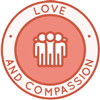
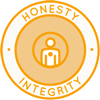
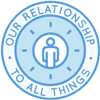
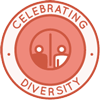
SHARE
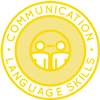
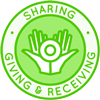
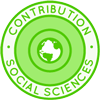
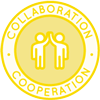
PLAY
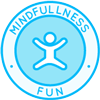
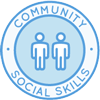
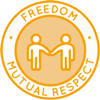
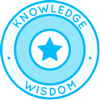
OPEN SOURCE TEACHING METHODOLOGY SUMMARIES
Montessori | Waldorf | Orff | Reggio | Multi-Intelligence | Bloom's Taxonomy | Study Tech | I-WE
INDEX OF ALL THE ONE COMMUNITY OPEN SOURCE LESSON PLANS
THE WORLD'S LARGEST ONLINE FREE EDUCATION RESOURCE ARCHIVE
RELATED CONTENT AND OTHER RELATED RESOURCES
We're building this resource section. Click here if you have a suggestion or resource for this page.
 One Community
One Community


